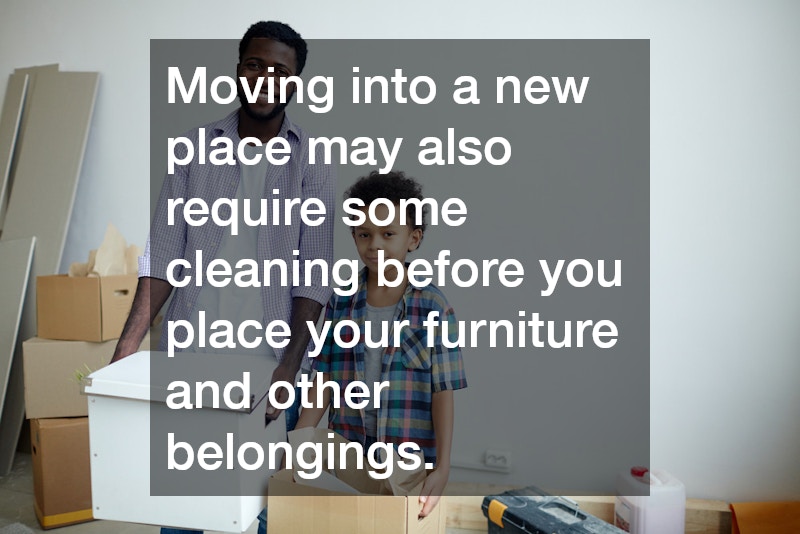
Most would agree that moving out of your home or rental space is hard work. It can be physically taxing and time-consuming. After moving your household items or work office, nights are usually included with sound sleep because you are completely exhausted. Still, cleaning is another aspect of driving that can be equally grueling. When you move out as a renter, whether in a business or residential dwelling, you can get your security deposit returned to you if the place has cleaned out well. That is why move-out cleaning services are a smart choice. A professional service can let you know what is included in a move-out cleaning so you can choose whether to go for a deep clean vs a move-out clean.

Moving into a new place may also require some cleaning before you place your furniture and other belongings. So, when you have a deadline to be out of your old place, you may contact a professional move out cleaning services to ask how long a move-out cleaning takes. You may have to ensure your new residence or office is clean first so that you can move in and occupy your new home without hesitation. The cleaning service may give you a special rate for a move-in/move-out cleaning that involves both places. This will save time and give you peace of mind.

Often, people move from one residence to another, and the process of moving requires some particular steps. There is more to it than packing all the plates and books in boxes and marking them; preparing for a move can take place well before professional movers and moving services are called upon. Local moving companies can provide a truck and trailers, but the homeowner who is preparing to move can take earlier steps to make this process faster and cheaper. As for hiring movers, a client may find more than one option, and some local movers may prove better suited for the job than others. Even junk removal services might be needed before the moving day arrives.
Americans and Moving
Like many other large industries in the United States, the moving industry is subject to many studies and surveys to track what the general trends are. What do the numbers show? A typical American will move 12 times in his or her life, and they will move less and less often as they get older. Senior citizens don’t move very often, since they have saved up a lot of money and would rather invest in their current residence. Other seniors live in retirement homes. Young adults are known to move quite often, such as for college or a new job, and they have relatively little money or possessions. They often rent their living space, and some young adults move as often as once per year. Overall, the “average” mover is a couple aged 18-34, with one or two children in their household.
Summer proves the most popular time for moving, since school is not in session and the weather is agreeable (if a bit hot for some states). June was the busiest mover month in 2018, and 13.11% of all moves in that year happened in June. By contrast, winter is the least popular time, possibly because of the uncomfortable cold and the hazards of snowy or icy roads during a move. That, and the busy holiday season for Christmas, Hanukkah, and others may clash with moving efforts. December ranks last among all months for moving.
Getting Ready to Move
Most often, hiring professional movers is among the last steps the moving party will take. What should be done first? Aside from deciding on a moving date and the new residence, the moving household is urged to slim down on inventory. Many households have a lot of items, often more than they even need or want anyway. Large items can be moved to self-storage units, such as a spare car or RV, while smaller items may end up being donated or recycled or even discarded.
There’s more than one way to slim down the total inventory, but a new and popular approach is to gather items by type and category, rather than room of origin. After all, some items of the same type may end up in different rooms. Gathering items into huge piles makes it easier to see the total amount, and decide what to keep vs what should be discarded or donated (or sold in garage sales). Categories may include clothing, books, kitchen utensils and cookware, electronic items, furniture, children’s toys, hobby items, and sentimental items. Clothing in particular is a huge category, and many households have two to three times as much clothing as they actually need. Slimming down the inventory will make the move much faster and easier.
Now, the mover can look up local professional movers, but they are not all the same as each other. Some professional moving companies are meant only for short range moves, such as within the same urban area, and are a poor choice for moving to another state or region. Other movers, though, are ready to help with long-range moves, even across the entire nation. A client should also check the moving company’s site to see what sort of fees will apply, and look up customer reviews for more reference. During moving day, the moving crews might help load large furniture and heavy boxes into trucks and trailers, and items should be packed close together so they cannot jostle around or fall over during a move. Straps can also be used to secure items in place during transit.